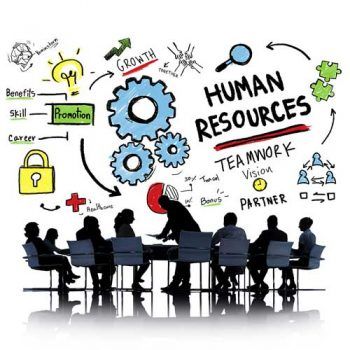Why is it so difficult to find great leaders in the world of work? What is the missing element that makes most super achievers fall short of being super leaders or mentors? What does it take for a skilled manager to become an inspiring leader as well and why do so many managers fail to make this leap? In this disruptive world, there is a burning need for leaders. Much has been written on this topic but there is always space for a new perspective. For today’s post, I invited Nilisha Mohapatra to share her insights on this topic. She has studied and worked in the Human Potential Development field and is a keen observer of people in work environments.
A few thoughts on management and leadership from John P. Kotter before we move on to the insights – he has said that “leadership and management are two distinctive and complementary systems of action” and that “leadership complements management – it doesn’t replace it….strong managers produce predictability, stability and order, but leaders create, communicate and implement visions of the future, which enables companies to change themselves in a changing competitive marketplace.”
Organizations are all about its people – which is why, a lot of research has gone into understanding what motivates people! This breadth of on-going research and innovation underlines one fact for me – that people management is the most crucial and most dynamic aspect of an organization. It is difficult too, because there are people involved. So many of them!
So how does one make the shift from managing people to leading people?
There are no cookie-cutter fixes for people management. The more I mull over this, I realize that for me it is all about attitude shifts that we need to bring about, rather than finding tricks for success. It all starts with the mind-set. As Gautam Buddha says, ‘The mind is everything. What You think, You become.’
Let this saying be our Pole Star for this blog post.
Here are my five cents to answer this big question:
1. People are capable and able of owning their careers and their lives. They do not need to be ‘managed’. I believe, all people need, is active mentoring and inspiring leadership. Each individual has a Pandora’s Box of talent within them. I mean it. All it takes is a nudge here, a push there, humaneness and occasional guidance, to unlock this. I have known a lady who continued in a data entry job for 10 years because her seniors believed her capability rested there. The moment she received mentoring to try out something new, she soared. Today she is a successful artist, creating social change using various arts media! This happened when she was at the receiving end of trust, acknowledgement of strengths, encouragement for risks, and effective role modelling. This approach is a belief system shift. It can create magic.
2. Respect people for the choice they make to work with You. The part about the choice here is to believe that many people take up their jobs because they want to do that work. They are drawn to it, have a passion or vision for it. They do not just take up a job for the sake of it. It is for us to really respect this very choice and nurture it. They choose to join You in the journey/trajectory of your organization and career, to work with you. Not for you. With You. If we can accept and value this, it will go a long way in the team members really having a sense of purpose in their careers, feel more valued and encouraged to contribute more. Engagement will sky-rocket.
3. Invest in people’s learning, and let them grow. At every point of our careers, we all need to learn. We grow because we learn. The higher up we go in our careers and seniority, the more privileged we are to work with increasing number of people. At that point it is then our responsibility as Mentors to facilitate the same kind, or even better opportunities than ours, for our team. Believe it or not, the learning is going to reach you eventually. The beauty of your experience comes into play when you mentor such growth. Investment can be in the form of allowing them to experiment, implement multiple ideas, unleash their creative thinking etc. When you can, create opportunities to invest in your team’s growth. You will foster high performance!
Be instrumental in polishing uncut diamonds.
4. Appreciation: Criticism = 4: 1. It is a scientifically proven fact by psychologist John Gottman that we need to have a 4:1 ratio of positive comments to negative (four acknowledgments for every one correction) in all relationships to have a healthy one. As mentors, we need to LIVE this. This practice really allows you to validate and acknowledge each of your team members for their work. They will feel seen and heard. What is wonderful about this practice is how it opens up the space for each person to receive constructive feedback and accept the room for improvement. If we want them to do more and be more, this would be a great place for us to start with. Genuine validation is all it takes. Start with 3:1 and then get to 4:1.
5. Be Authentic. Be real and allow the person that you are, to come through in your interactions. This is a great way to build a trustful and synergetic environment in your team. This for me is also purely about walking the talk, and leading from within. If you want to motivate someone to be more accountable, you yourself have to take on the next level of accountability. Want your team to take more risks? Demonstrate risk taking. Set the tone with this authenticity. That way everyone knows that You as a mentor will always have their back!
Over time as I have discussed these ideas with people I meet, I have been told that such mentors are a rare breed indeed. And I understand why it is so. Because this is a conscious and persistent choice we are talking about, which will undo years of conditioning, which might have its roots in the beginning of the Industrial Revolution! But I firmly believe that with these five attitudinal shifts, we can really transform the landscape of ‘people management’ into ‘people mentoring’. And that is the need of the hour.
“We all need to be leaders, regardless of our formal title or role. This starts with inner self-leadership and moves outward to influence, guide, support, and lead others. The process of becoming a leader is the same as the process of becoming a highly effective human being. Leadership development is personal development. Leadership ultimately shows itself in what we do “out there.” But it starts “in here.” “~Jim Clemmer – Growing the Distance
Be your indulging mentor. Let it start with you, because You Matter! I believe that the choice to start a phenomenal trend, lies with You. So let it roll!
What have we missed ? What are your observations on making the shift to inspiring leadership ? Nilisha and I would love to hear back and learn from you.
Nilisha is trained as a Mentor Trainer, delivering complex training to Indian volunteers learning to become mentors to disadvantaged children. She has a Masters in Applied Psychology and has transformed herself into a creative and inspiring trainer who both taught acceptance and behaviour change as well as living the principles in her training. This is Nilisha (@NilishaM)’s fifth guest post for Happy In The Now and you can read all her blogs at fantasycluster.wordpress.com
Pic Courtesy :
http://www.theolivebranchblog.com/wp-content/uploads/2013/11/lead-by-example1.jpg




